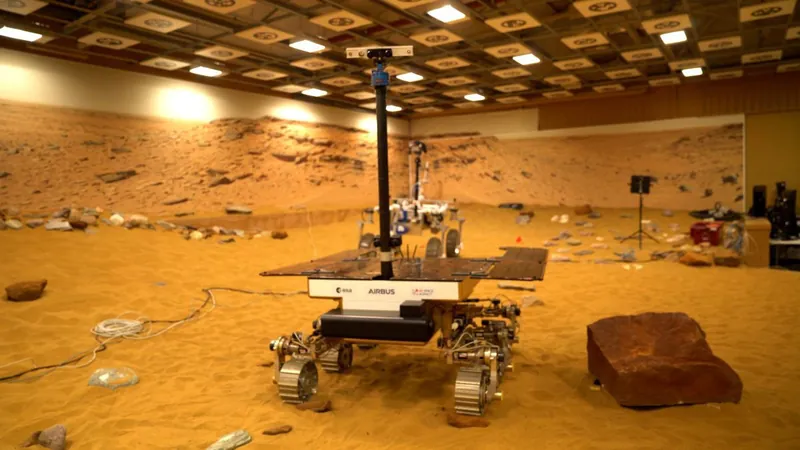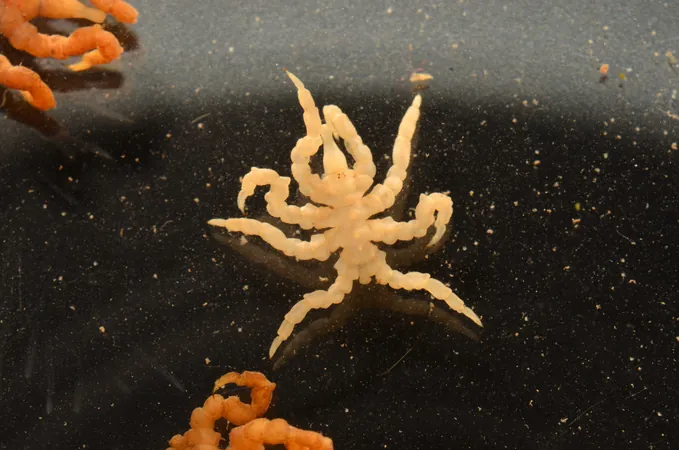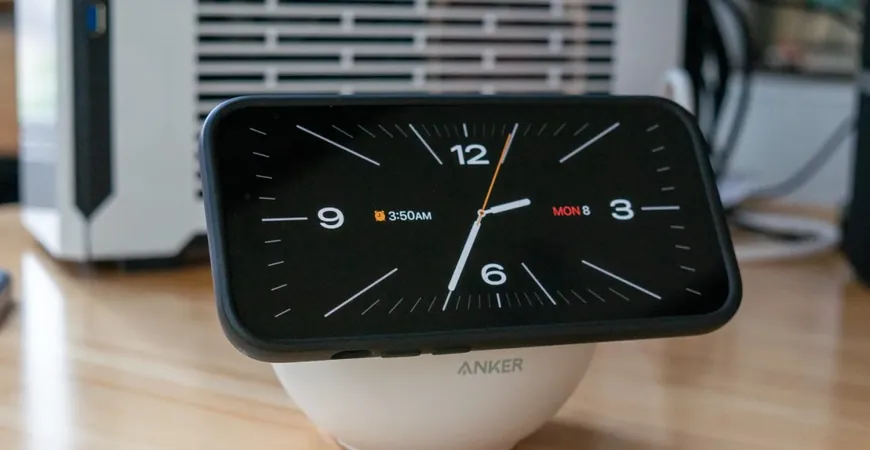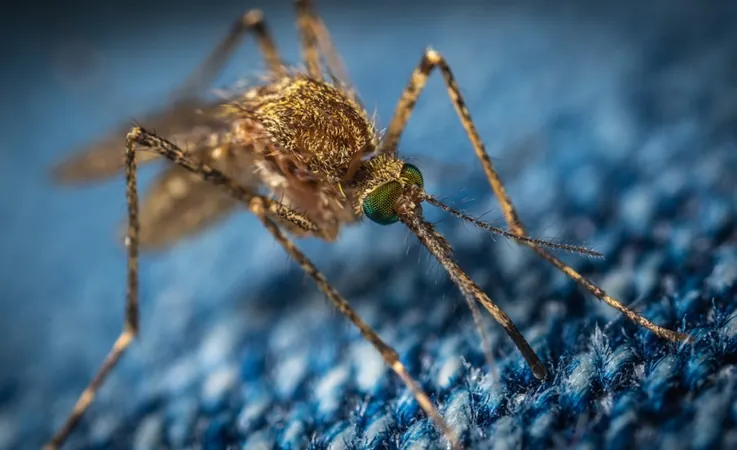
Unlocking the Secrets of Mars: Inside Britain's Quest for Extraterrestrial Life
2025-06-02
Author: Olivia
Mars Comes to Stevenage: The Unlikely Laboratory
Nestled in a modest factory in Stevenage, England, aerospace giant Airbus has recreated a piece of Mars itself. This isn't a distant dream; it's a cutting-edge laboratory designed to replicate the harsh conditions of the Red Planet—complete with arid orange sand and rocks, all under intense lighting to mimic Martian shadows.
The Mission: Meet the Rosalind Franklin Rover
At the heart of this operation is the Rosalind Franklin rover, an ambitious robot set to embark on a groundbreaking mission to uncover signs of life on Mars. Scheduled for launch in 2028 as part of the European Space Agency’s ExoMars mission, it won't touch down on the Martian surface until 2030. This two-year delay is due to precise launch windows, opening only every 26 months.
Waiting for the Right Moment: Launch Logistics
Yvonne Pickering, a senior engineer at Airbus, explains the complexities involved: "Earth and Mars are in different orbits. If we don’t launch at the right time, we could miss our window entirely. The next launch phase lasts just 22 days." After launch, the rover will spend nine months en route to Mars, likely arriving during a fierce dust storm that would hinder its solar panels.
Digging Deep: A Search for Life
Once it finally lands, the Rosalind Franklin rover will dig beneath the Martian surface, searching for organic matter that may still exist despite millennia of radiation bombardment. Last year, scientists discovered a vast underground reservoir of liquid water on Mars—enough to fill oceans—raising hopes for potential ancient life.
The Rover's Precision Navigation
Mars is a tricky place to navigate. There's often a 45-minute communication delay between Earth and Mars, making remote control nearly impossible. Instead, the rover is equipped with autonomous capabilities, allowing it to navigate its own path towards drilling sites while adhering to strict safety measures that ensure it doesn't topple over or get stuck.
Slow but Sure: The Rover's Methodical Approach
The rover moves at a crawl, covering only about 2 centimeters per second. This deliberate pace is crucial—every few meters, it pauses to capture images and assess the terrain ahead before proceeding. As Pickering notes, "Safety is paramount; our goal is to keep the rover upright and operational."
The Big Question: Is There Life on Mars?
When asked if she believes there's life on Mars, Pickering reflects thoughtfully. "Mars shares many characteristics with Earth, including features that suggest past water flow. These signs could indicate that life once thrived here." The findings from the Rosalind Franklin rover might soon provide the definitive answer to one of humanity's oldest questions.
The Road Ahead for Mars Exploration
As this pioneering project unfolds, the world watches closely. The quest for life on Mars is not just a scientific endeavor; it's a glimpse into our own origins and the mysteries that lie beyond our planet. Will the Rosalind Franklin rover uncover the evidence we've long sought? Only time will tell.









 Brasil (PT)
Brasil (PT)
 Canada (EN)
Canada (EN)
 Chile (ES)
Chile (ES)
 Česko (CS)
Česko (CS)
 대한민국 (KO)
대한민국 (KO)
 España (ES)
España (ES)
 France (FR)
France (FR)
 Hong Kong (EN)
Hong Kong (EN)
 Italia (IT)
Italia (IT)
 日本 (JA)
日本 (JA)
 Magyarország (HU)
Magyarország (HU)
 Norge (NO)
Norge (NO)
 Polska (PL)
Polska (PL)
 Schweiz (DE)
Schweiz (DE)
 Singapore (EN)
Singapore (EN)
 Sverige (SV)
Sverige (SV)
 Suomi (FI)
Suomi (FI)
 Türkiye (TR)
Türkiye (TR)
 الإمارات العربية المتحدة (AR)
الإمارات العربية المتحدة (AR)